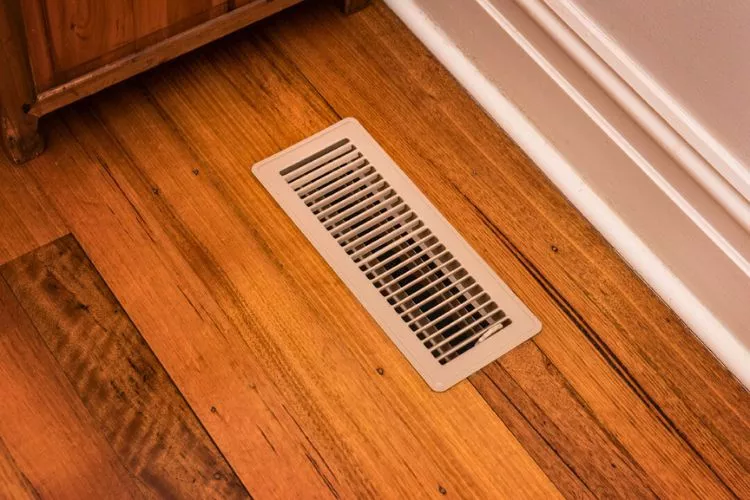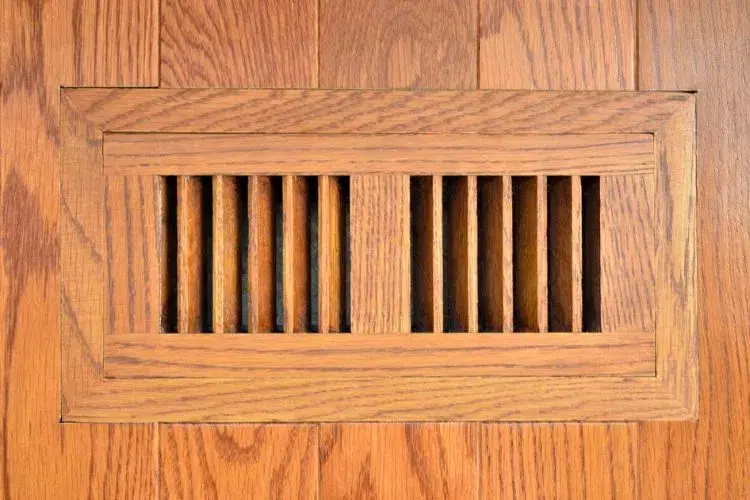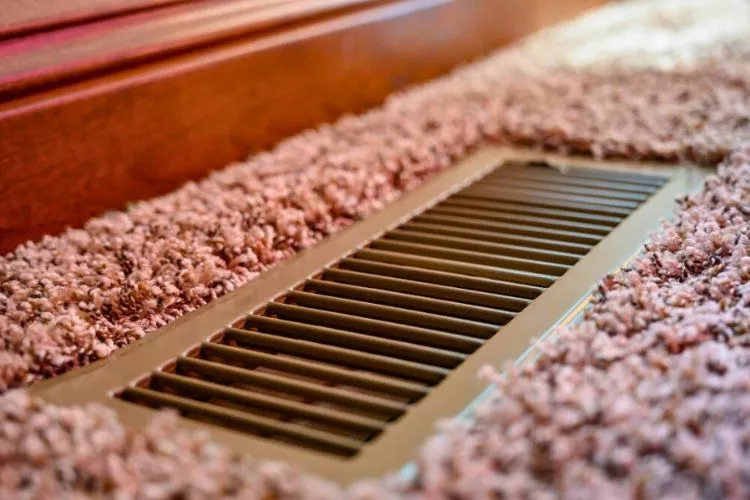Floor vents are vital in maintaining proper airflow and temperature regulation within a home.
For various reasons, homeowners may consider partially covering their floor vents, perhaps to accommodate furniture placement and interior design preferences or to gain more control over room temperature.
So, can you partially cover a floor vent?
Yes, you can partially cover a floor vent if need be, but it’s not recommended. It can cause multiple adverse effects, and may even cause serious damage to your HVAC system.
That’s why before taking any action, it is essential to understand the potential impact of partially covering a floor vent and the best practices to maintain energy efficiency and comfort.

Quick Recommendations
Last update on 2025-03-27 / Affiliate links / Images from Amazon Product Advertising API
Can you partially cover a floor vent?
Yes, you can partially cover a floor vent, but it is not recommended. Partially covering a floor vent can disrupt the airflow and temperature regulation in the room, leading to decreased energy efficiency and potential damage to the HVAC system.
Blocking the airflow can cause the furnace or air conditioner to work harder, potentially causing damage to the system or leading to higher energy bills.
Additionally, covering a vent can create hot or cold spots in the room, making it uncomfortable to live in. If you need to partially cover a floor vent, using the right materials and techniques is important to ensure proper airflow and temperature regulation.
A magnetic vent cover or an adjustable deflector can help redirect the airflow without blocking it entirely. It is best to consult an HVAC professional before changing your heating and cooling system.
How much clearance does a floor vent need?
Floor vents require a minimum clearance of 6 to 10 inches around the perimeter of the vent. This clearance is necessary to ensure proper airflow and temperature regulation in the room.
If the vent is blocked or obstructed, it can cause the furnace or air conditioner to work harder, leading to decreased energy efficiency and potential damage to the HVAC system.

Additionally, blocking the vent can create hot or cold spots in the room, making it uncomfortable to live in.
When placing furniture or other objects near a floor vent, it is important to maintain a minimum clearance of 6 inches to avoid any issues with airflow or temperature regulation.
If you need to cover or partially cover a floor vent, consulting with an HVAC professional is best to ensure proper installation and functionality.
Can you put a couch over a floor vent?
While putting a couch or any other large furniture over a floor vent is not recommended, it is possible to do so with caution and proper planning.
Placing a couch over a floor vent can block or obstruct the airflow, leading to decreased energy efficiency and potential damage to the HVAC system. Additionally, blocking the vent can create hot or cold spots in the room, making it uncomfortable to live in.

If you must place a couch over a floor vent, it is important to take measures to ensure proper airflow and temperature regulation. One option is to use a vent extender, which redirects the airflow from the vent to a different location in the room.
Another option is to elevate the couch slightly to allow for airflow underneath.
It is important to maintain a minimum clearance of 6 inches around the perimeter of the vent to avoid any issues with airflow or temperature regulation.
If you are unsure how to properly place furniture on your floor vents, it is best to consult an HVAC professional for guidance.
How much space do you need over a vent?
You need a minimum clearance of 12 inches above a vent to ensure proper airflow and temperature regulation. This clearance allows the air to circulate freely and prevents any obstruction, ensuring your HVAC system operates efficiently and effectively.
Blocking or obstructing airflow from a vent can lead to decreased energy efficiency, potential damage to the HVAC system, and create hot or cold spots in the room, making it uncomfortable to live in.

When placing furniture, curtains, or other objects near a vent, it is important to maintain a minimum clearance of 12 inches above the vent.
If you need to cover or partially cover a vent, consider using a vent deflector or extender to redirect airflow without causing an obstruction.
Always consult an HVAC professional before making any changes to your heating and cooling system to ensure proper installation and functionality.
frequently asked questions (fAQs)
u003cstrongu003eWhat can I cover my floor vents with?u003c/strongu003e
You can cover your floor vents with vent covers specifically designed for this purpose. These covers are available in various materials, including wood, metal, and plastic. They come in various sizes and styles to fit different vent types and can be easily installed over the vent opening.
u003cstrongu003eIs covering a floor vent a fire hazard?u003c/strongu003e
Covering a floor vent with a proper vent cover is not a fire hazard. However, it is important to avoid covering the vent with any materials that are flammable or can restrict airflow, such as paper, cloth, or plastic bags. These materials can reduce air circulation or catch fire, leading to potential hazards.
u003cstrongu003eCan you put a rug over a floor vent?u003c/strongu003e
Putting a rug over a floor vent is possible. Still, it is not recommended as it can block or restrict airflow, leading to decreased energy efficiency and potential damage to the HVAC system. If you must put a rug over a floor vent, leave a minimum clearance of 12 inches around the perimeter of the vent to ensure proper airflow and temperature regulation.
u003cstrongu003eWhat happens if you block a floor vent?u003c/strongu003e
Blocking a floor vent can cause various issues, including decreased energy efficiency, potential damage to the HVAC system, and hot or cold spots in the room. Reduced airflow can cause the furnace or air conditioner to work harder, leading to increased energy consumption and potential damage to the system. u003cbru003eAdditionally, the room’s hot or cold spots can make living uncomfortable. It is important to maintain a minimum clearance of 12 inches above the vent and 6 inches around the perimeter of the vent to avoid any issues with airflow or temperature regulation.
Conclusion:
Suppose you find it necessary to cover a floor vent. In that case, it is crucial to use proper vent covers or deflectors specifically designed for this purpose and maintain a minimum clearance above and around the vent to ensure adequate airflow and temperature regulation.
Consulting with an HVAC professional before making any changes to your heating and cooling system is highly recommended, as they can provide expert guidance on maintaining proper airflow while achieving your space’s desired aesthetic or functional needs.
Remember, prioritizing the efficiency and effectiveness of your HVAC system will ultimately lead to a more comfortable and cost-effective living environment.





